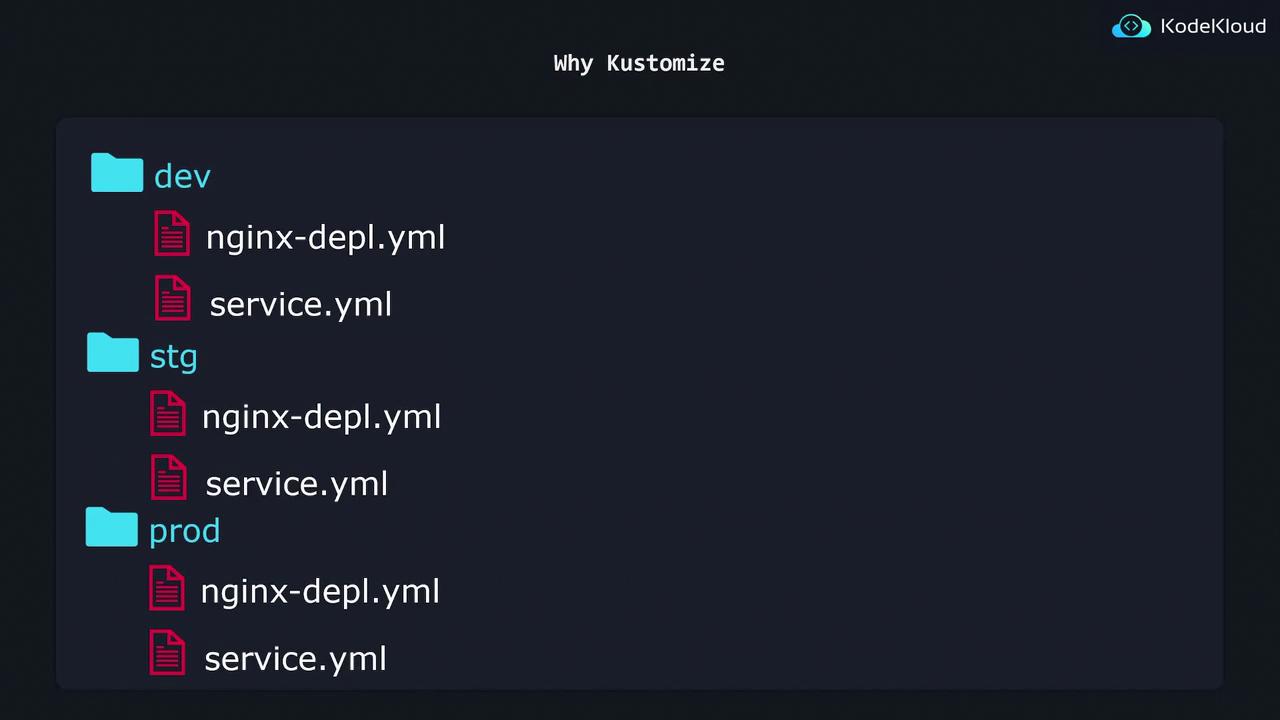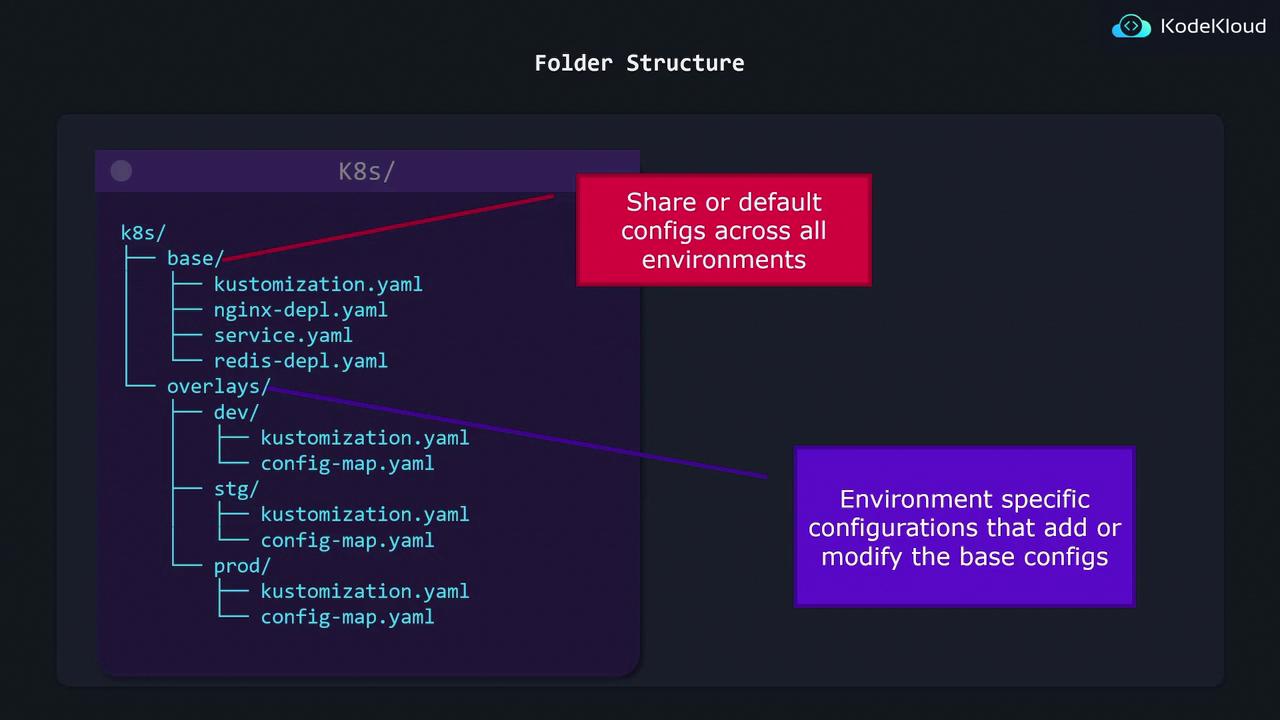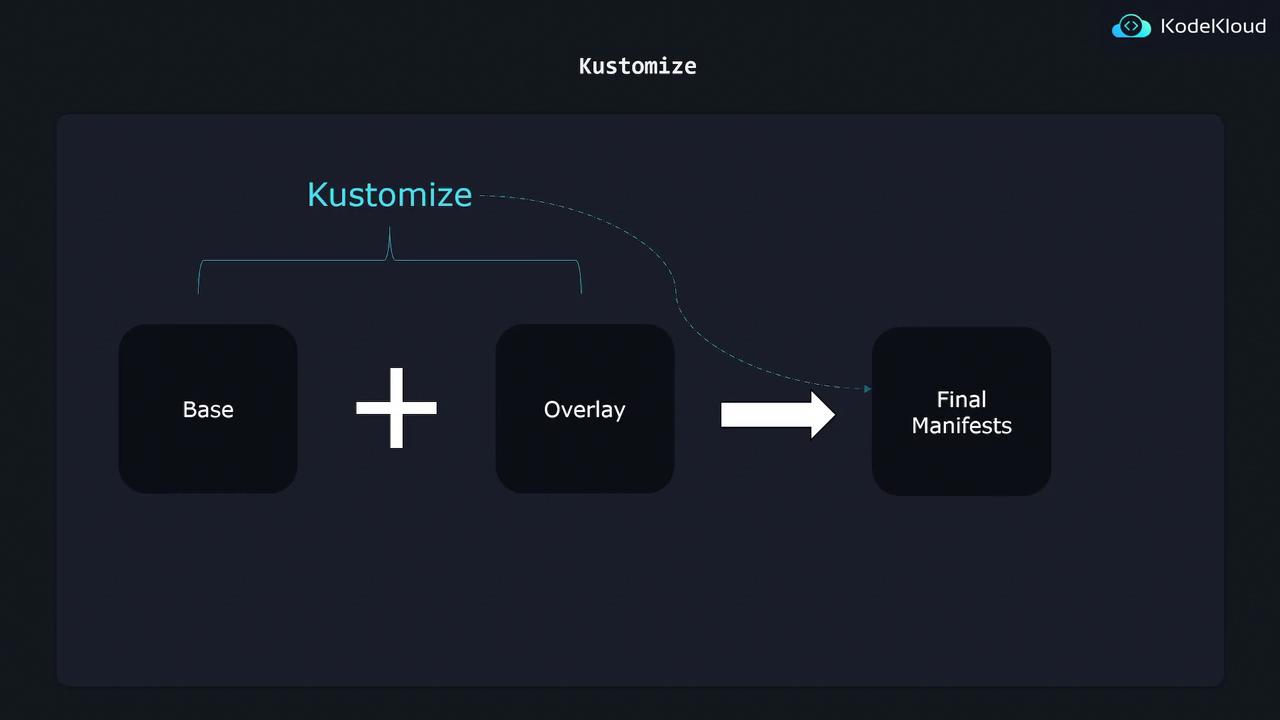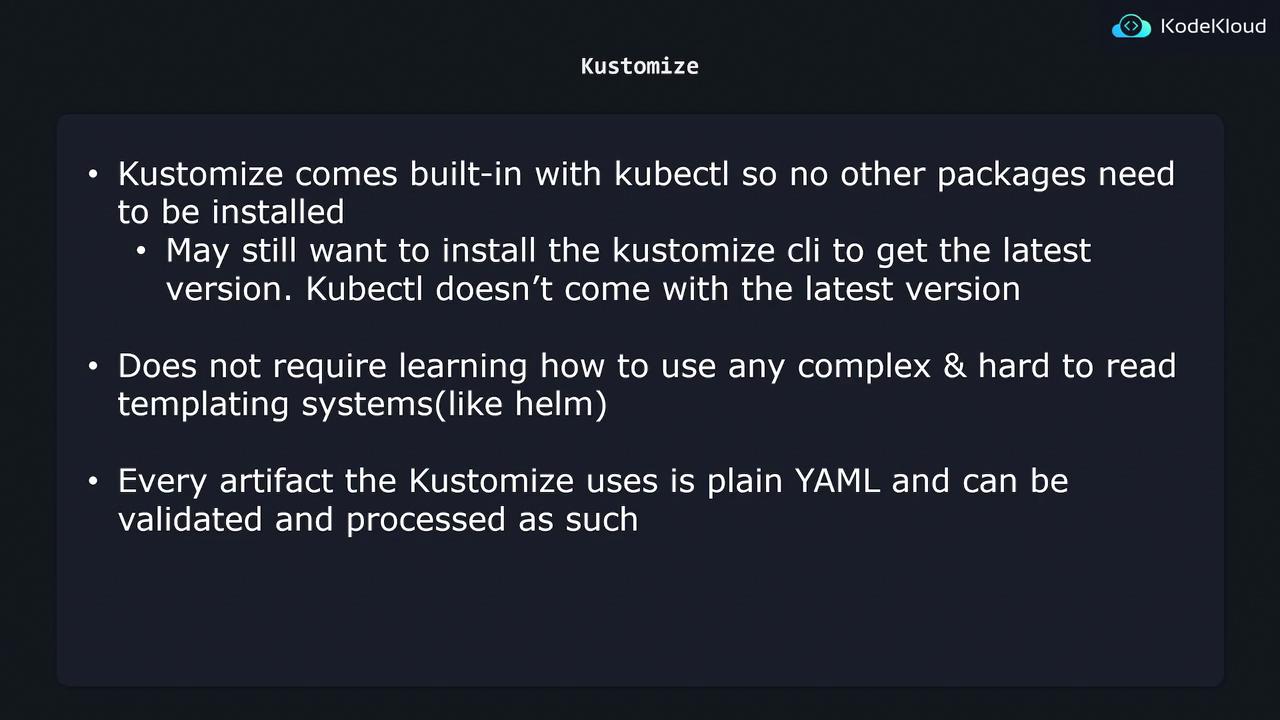CKA Certification Course - Certified Kubernetes Administrator
Kustomize Basics 2025 Updates
Kustomize Problem Statement idealogy
Before diving into what Kustomize is and how to use it, let's review the problem it addresses and the motivation behind its creation.
The Challenge with Multiple Environments
Consider a simple example using an nginx deployment YAML file that deploys a single nginx pod:
apiVersion: apps/v1
kind: Deployment
metadata:
name: nginx-deployment
spec:
replicas: 1
selector:
matchLabels:
component: nginx
template:
metadata:
labels:
component: nginx
spec:
containers:
- name: nginx
image: nginx
Imagine you have multiple environments—a development environment on your local machine, a staging environment, and a production environment. You need your deployment to behave differently in each, with varying numbers of replicas. For example:
- 1 replica in development,
- 2–3 replicas in staging, and
- 5–10 replicas in production.
If you use a single nginx deployment YAML file, each environment would deploy only one replica. A common workaround is to create separate directories (dev, stg, prod) and duplicate your configuration file while modifying only the replica count.
Example Directory Structure
Your directory might be organized as follows:
- dev: The deployment file sets replicas to 1.
- stg: The same configuration is used but with replicas set to 2.
- prod: The replica count is set to 5.
For instance:
# dev/nginx.yml
apiVersion: apps/v1
kind: Deployment
metadata:
name: nginx-deployment
spec:
replicas: 1
selector:
matchLabels:
component: nginx
template:
metadata:
labels:
component: nginx
spec:
containers:
- name: nginx
image: nginx
# stg/nginx.yml
apiVersion: apps/v1
kind: Deployment
metadata:
name: nginx-deployment
spec:
replicas: 2
selector:
matchLabels:
component: nginx
template:
metadata:
labels:
component: nginx
spec:
containers:
- name: nginx
image: nginx
# prod/nginx.yml
apiVersion: apps/v1
kind: Deployment
metadata:
name: nginx-deployment
spec:
replicas: 5
selector:
matchLabels:
component: nginx
template:
metadata:
labels:
component: nginx
spec:
containers:
- name: nginx
image: nginx
To deploy the configuration, you would run a command for each environment, for example:
$ kubectl apply -f dev/
deployment.apps/nginx-deployment created
For the staging environment:
$ kubectl apply -f stg/
deployment.apps/nginx-deployment created
This command creates two nginx pods for staging.
Note
This approach works for small deployments. However, as you add more resources (e.g., a separate service.yaml file), you must copy every new file to each environment directory, increasing both maintenance overhead and the risk of inconsistencies.
The directory structure might end up looking like this:
dev
├── nginx-depl.yml
└── service.yml
stg
├── nginx-depl.yml
└── service.yml
prod
├── nginx-depl.yml
└── service.yml
Enter Kustomize
Kustomize provides a scalable solution to avoid excessive duplication. Instead of maintaining separate configurations for each environment, you can create a single Base configuration and apply environment-specific Overlays for adjustments.
Base and Overlays Explained
Base: Contains settings common to all environments. For example, the Base for the nginx deployment might look like this:
apiVersion: apps/v1 kind: Deployment metadata: name: nginx-deployment spec: replicas: 1 selector: matchLabels: component: nginx template: metadata: labels: component: nginx spec: containers: - name: nginx image: nginxOverlays: Allow you to override or add environment-specific configurations. For example, you can change the replica count to 2 for staging and 5 for production.
Recommended Folder Structure
A typical folder structure when using Kustomize might include:
- A base directory containing all the shared Kubernetes configurations.
- An overlays directory with subdirectories for each environment (dev, stg, and prod). Each subdirectory includes patches or additional resources that override the Base configuration.
This organization ensures that common configurations remain in the base folder, while environment-specific modifications are managed separately, preventing configuration drift and reducing the effort required for updates.

Configuration as Code
This approach adheres to the principle of treating configuration as code, minimizing repetition while ensuring consistency across your Kubernetes deployments.
The Merging Process
When you run Kustomize, it merges the Base configuration with your selected environment overlay, producing a complete set of manifests ready for deployment.


One of Kustomize's best features is its seamless integration with kubectl. Since it is built into kubectl, no additional installation is required (although you might update it later if necessary). Unlike Helm, Kustomize avoids complex templating, relying instead on plain YAML files which are easy to read, validate, and maintain.

Summary
Kustomize effectively addresses the challenges of managing configurations across multiple environments by allowing you to maintain a single Base configuration and apply minimal, environment-specific Overlays. This strategy ensures consistency, reduces maintenance overhead, and scales well as your Kubernetes deployments grow.
Happy customizing!
Watch Video
Watch video content